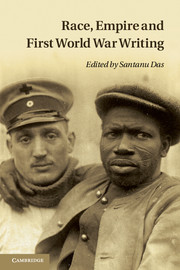Introduction
Published online by Cambridge University Press: 05 February 2014
Summary
On the rainy night of 2/3 March 1915, Jemadar Mir Mast, an Indian soldier serving in the 58th Vaughan's Rifles (Bareilly Brigade) at Neuve Chapelle, deserted and quietly crossed over to the German side with a group of fellow Pathans. Mir Mast was an enterprising man. It is believed that he became part of a jihad mission from Germany, and Anglo-Indian myth has it that the Kaiser decorated him with the Iron Cross. Because of the exceptional nature of the event, his trench notebook is now housed in the National Archives in Delhi, contained in a hitherto sealed envelope marked ‘His Majesty's Office’. It is a curious document. Along with a hand-drawn trench map, some casual jottings and numbers, it comprises a long list of words, first in Urdu and then in English. The words range from the functional (‘haversack’, ‘blanket’, ‘please’) to the warmly human (‘hungry’, ‘nephew’, ‘honeymoon’) to the robustly earthy (‘testacles’ [sic], ‘brests’ [sic]) (Figure 1). This tantalising and hitherto unknown ‘diary’ (as referred to in the National Archives catalogue) – a rare, if not the only surviving, example of a trench notebook by an Indian soldier of the First World War – raises a number of broad questions. What do we know about the daily lived war experience of these men from the former colonies and from different racial and ethnic groups?
- Type
- Chapter
- Information
- Race, Empire and First World War Writing , pp. 1 - 32Publisher: Cambridge University PressPrint publication year: 2011
References
- 6
- Cited by



